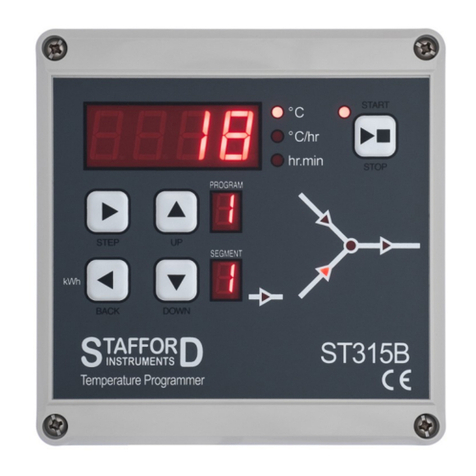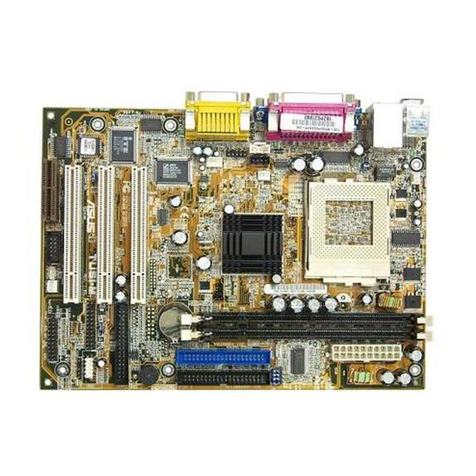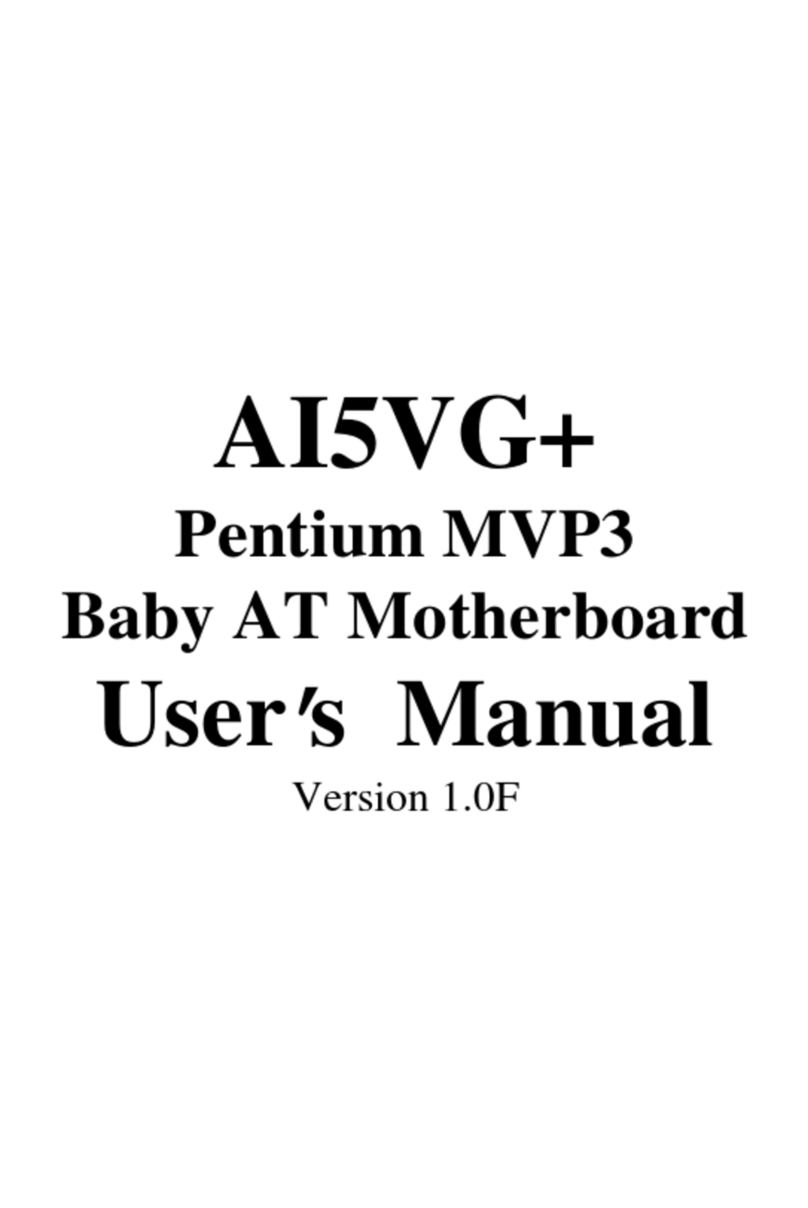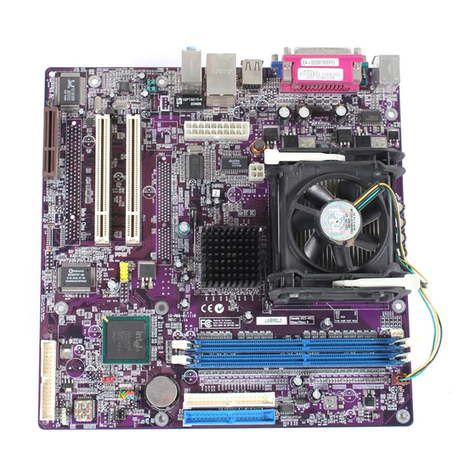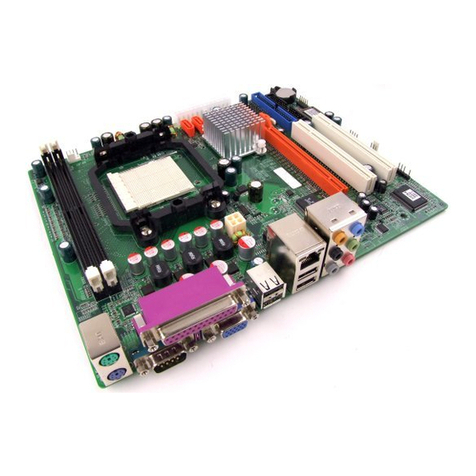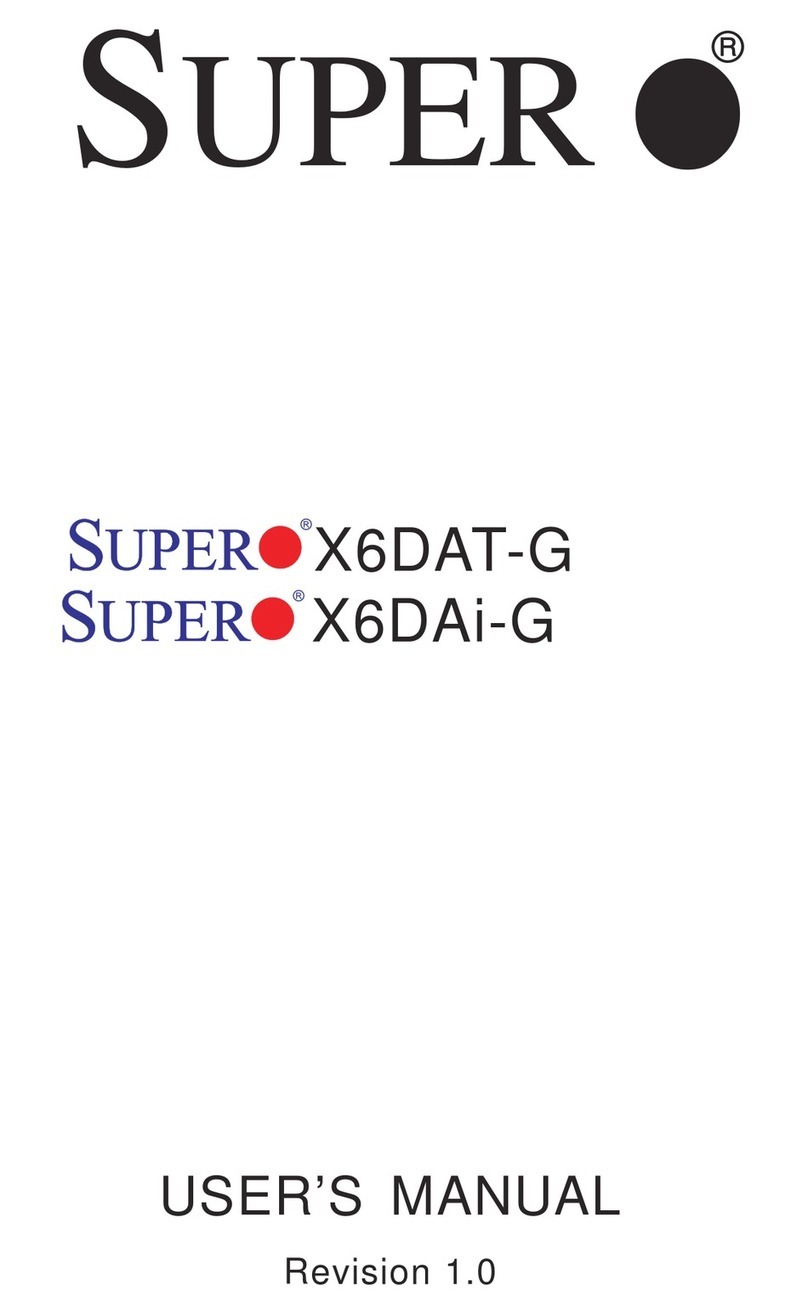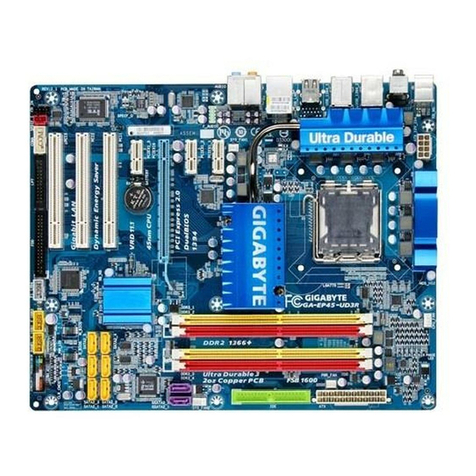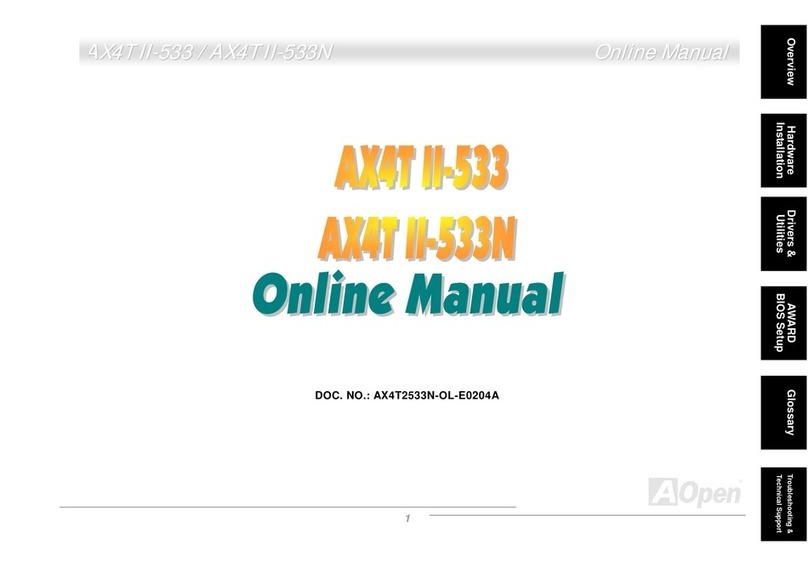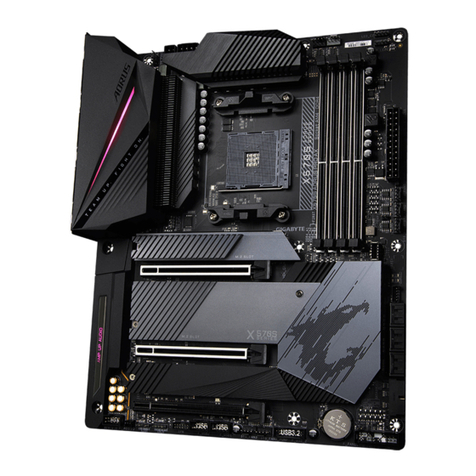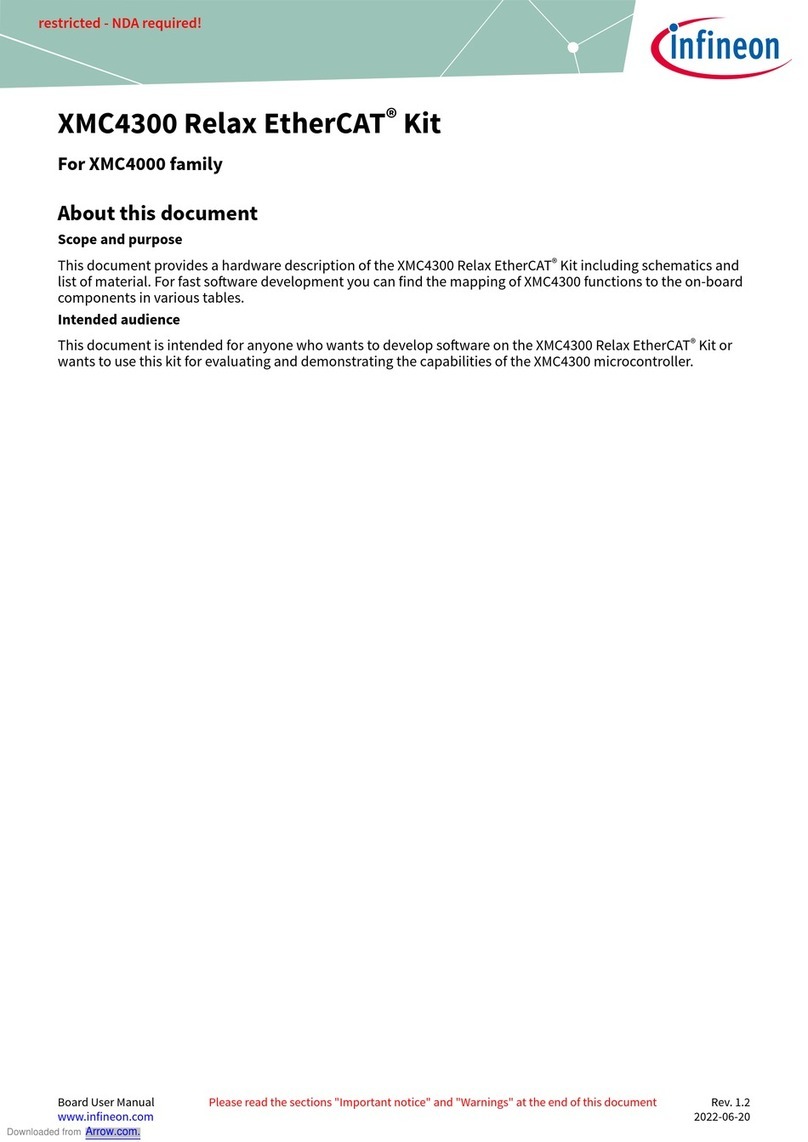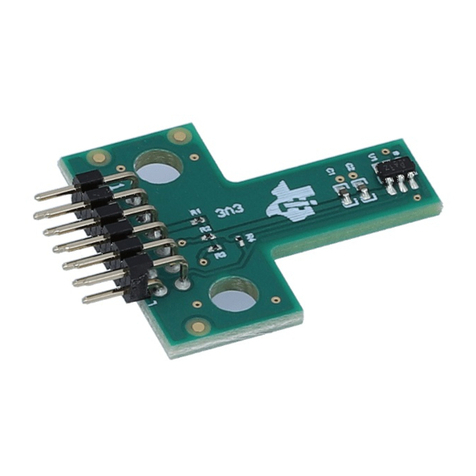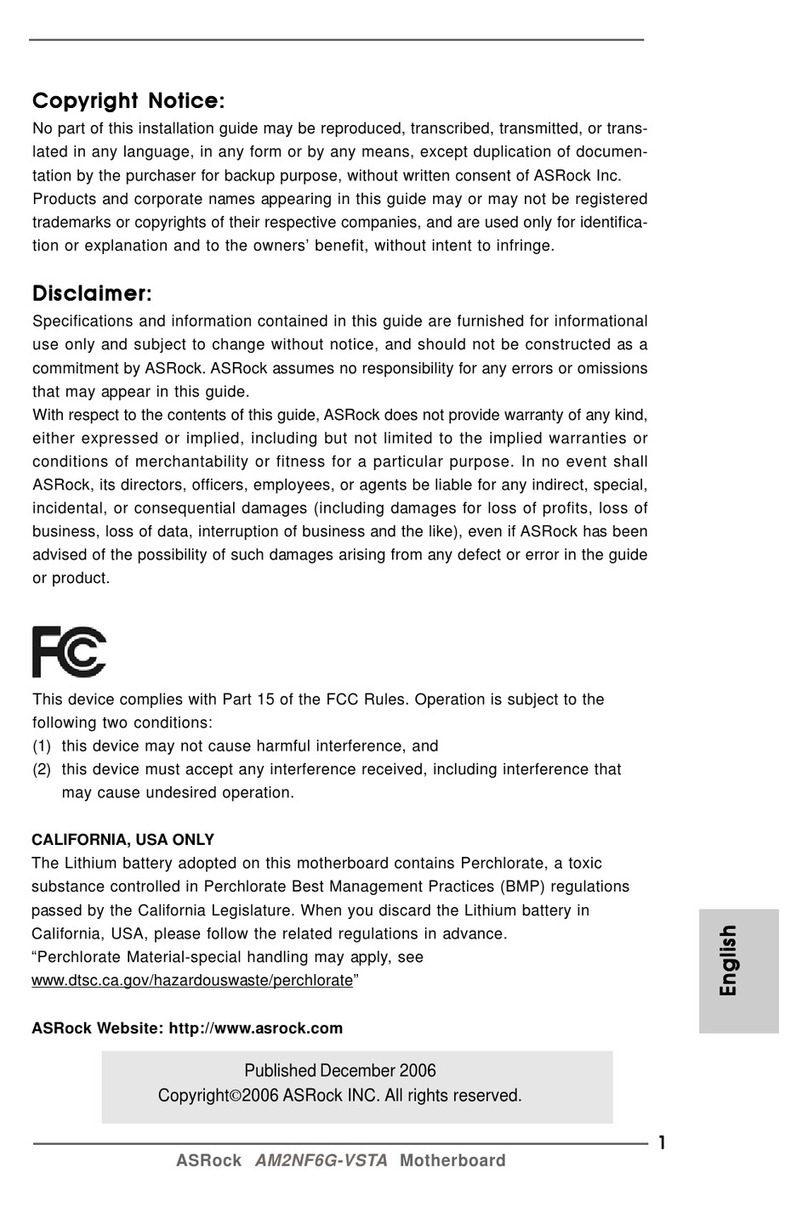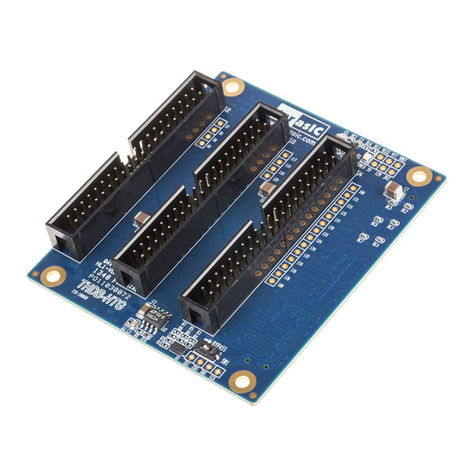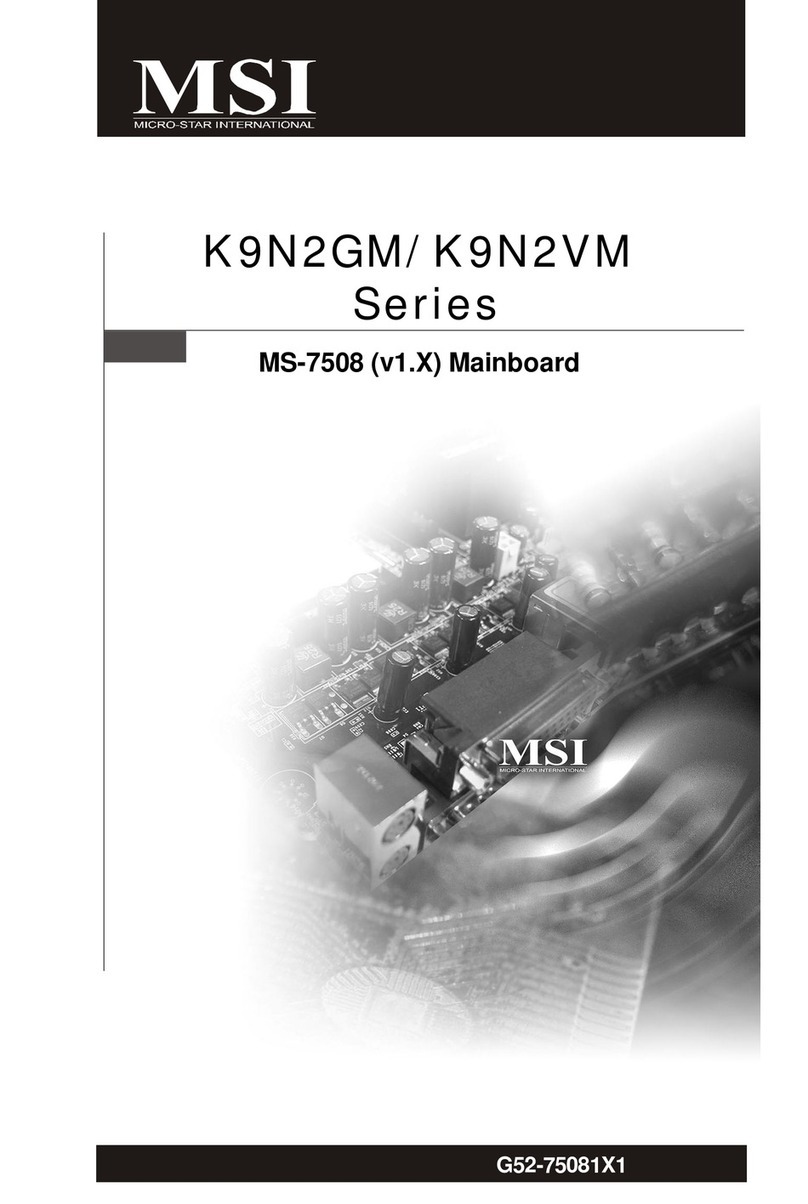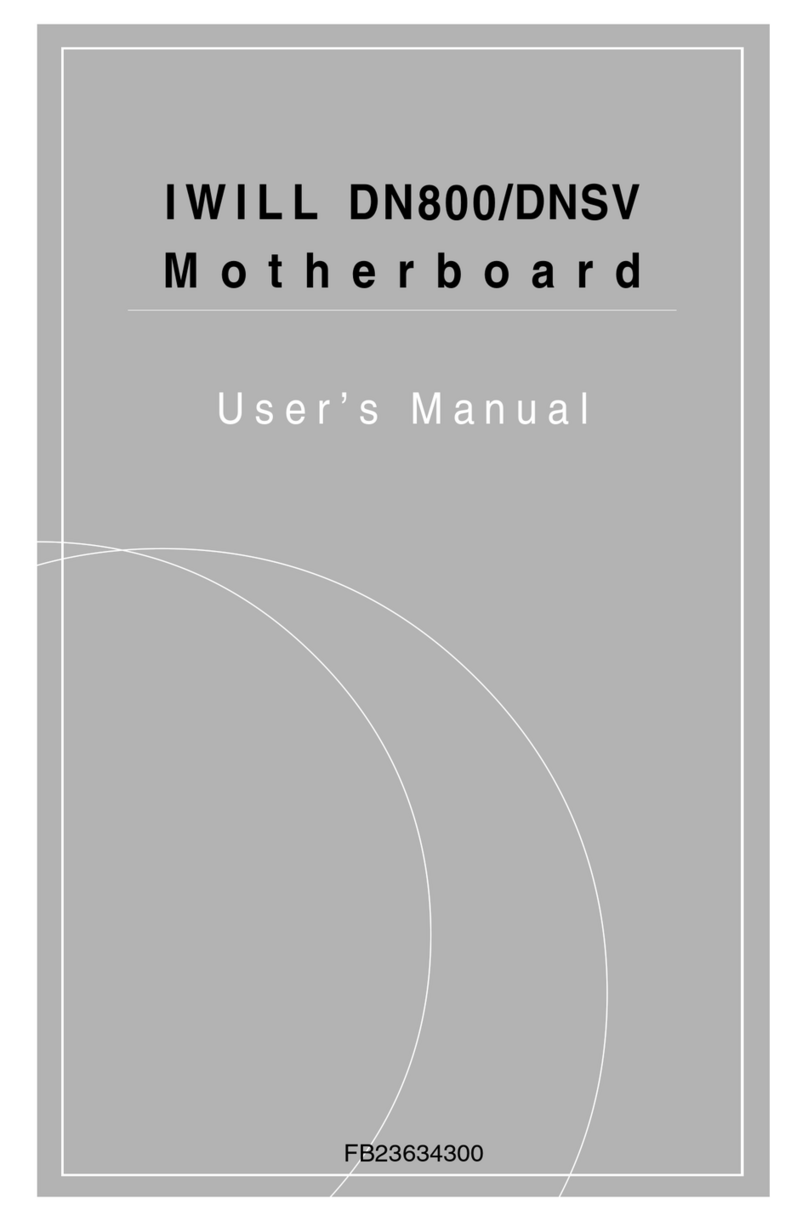Stafford Instruments ST216 Instruction Manual

ST216 User Handbook Page 1
ST216 Temperature Programmer
User Handbook
Issue: 2.00
Date: 12 Dec 2016
See separate handbook for Installation Instructions
© Copyright 2014 - 2016 Stafford Instruments Ltd.
www.staffordinstruments.co.uk
TAFFOR
S
D
ST216

Page ST216 User Handbook
2
At a Glance
FUSE
CONTROLKEYS
START/STOPKEY
FIRINGINDICATOR
TEMPERATURE
ICON
RAMPRATEICON
TIMEICON
KILNHEATING
INDICATOR
MIMICDISPLAY
MAIN
DISPLAY
PROGRAM
DISPLAY
POWERON/OFFSWITCH

ST216 User Handbook Page 3
Quick Start Guide
Switch on & wait for kiln temperature display
To run a firing program set up previously press
the ►nkey
To stop the firing at any time press the ►nkey
again
To review firing data press the ►key to enter
the programming mode
To change firing data press the ▲& ▼keys to
change the displayed value
Use the ►key again as necessary to step to
the next firing value to be reviewed or changed
To exit the programming mode either wait 20
seconds or press the ►nkey to start firing
If the keyboard is locked then press the ▲& ▼
keys together & hold down for 5 seconds to un-
lock

Page ST216 User Handbook
4
Contents
At a Glance .................................................2
Quick Start Guide........................................3
Contents......................................................4
Features......................................................4
Turning On..................................................5
Programming...............................................6
Program Linking..........................................8
Firing ...........................................................9
Cooling........................................................9
Operating Notes........................................10
Adjusting While Firing...............................11
Error Messages.........................................12
Other Features..........................................14
Sample Ceramics Programs.....................15
·
80 programs
· Program linking available
· Soak periods up to 99 hours 59 mins
· Ramp rates from 1 to 999°/hour + FULL
· Ideal for ceramics use
· Programs can be altered while firing
· Program pause and advance facilities
· Keyboard lockable
· Delayed start facility - up to 99 hours 59 mins
· Power failure recovery
· Energy used display
· Setpoint display
· Alarm buzzer & alarm output
· °C/°F operation
Features

ST216 User Handbook Page 5
Turning On
When turned on the ST216 performs a display
test by lighting all of the display segments and
illuminating all of the front panel indicator
lamps.
The version number of the software embedded
within the ST216 is now displayed. If you
need technical support you might be asked for
this code together with the serial number.
Next displayed is the thermocouple type set-
ting. This should match the type of thermo-
couple fitted to the kiln and can be R, S, K or
N type (r,S,H,n).
The final display will show the kiln tempera-
ture. All other lamps should be off.
If pressing any key causes LOC to appear
then the keyboard has been locked. This is
an anti-tamper feature. Press the ▲& ▼
keys together & hold down for 5 seconds to
unlock.
During firing the right-hand decimal point
will light to show when heating power is
being applied to the kiln.
This now shows that the keyboard is UN-
LOCKED. To re-lock the keyboard press the
▲& ▼keys together & hold down for 5
seconds.
If any mimic panel lamps are on then the ST216 is firing. To stop the firing
press the ►nkey.
Note: During power up the PROGRAM display
shows the operating units (°C/°F) of the ST216
(Installer selectable).

Page ST216 User Handbook
6
Programming
A firing program
An ST216 firing program comprises of a ramp to an intermediate temperature
t1 followed by another ramp to the soak temperature followed by a soak period.
The ST216 ramps the kiln temperature at the required ramp rate 1 until the kiln
reaches temperature t1. It then ramps the kiln temperature to the soak temper-
ature where it dwells for the required soak period.
Each ramp rate is independently settable in the range 1°/hour to 999°/hour or
FULL (full power) or End (end of program).
The soak / target temperature is settable over the range 0 to 1400°C (2552°F).
The soak period is settable over the range 00.00 (no soak) to 99 hours 59
mins.
A program linking feature is available for complex firings. This feature is disa-
bled by default but can be enabled by reference to the Installation Handbook.
Only heating ramps are depicted on the mimic display but the ST216 is capa-
ble of both positive (heating) ramps and negative (cooling) ramps.
Note: during soaking the ST216 display alternates every 15 seconds
between kiln temperature and soak period remaining.
Soakperiodlamp
Ramp2lamp
Ramp1lamp
Soaktemperaturelamp
t1lamp

ST216 User Handbook Page 7
When not firing there are no indicators lit on
the mimic panel, the run indicator is off and
the display shows the current kiln
temperature.
Altering a program
The controller settings can be reviewed by pressing the ►key.
The first push of the ►key flashes the dedicated program number
display. The required firing program can now be selected with the ▲&
▼keys. There are 80 programs available.
Note: holding down the ▲or ▼keys causes rapid change of the displayed value.
The next push of the ►key displays ramp
rate 1 in °/HR or FULL. This can be altered
with the ▲& ▼keys. The ramp 1 indicator
on the mimic panel will flash. FULL ramps as
fast as possible.
The next push of the ►key displays
temperature t1. This can be altered with the
▲& ▼keys. The t1 indicator on the mimic
panel will flash.
The next push of the ►key displays the soak
period in hours:minutes. This can be altered
in the range 00:00 to 99:59 with the ▲& ▼
keys. The soak period indicator on the mimic
panel will flash.
Note 2: to exit programming without cycling through all of the above steps wait 20 seconds without
pressing any keys - the ST216 will revert to the idle display. Alternatively press the ►nkey to exit
programming and to begin firing immediately.
Note 3: the ◄key can be used to reverse through the programming steps to correct errors or to exit pro-
gramming mode.
Note 1: available ramp rate displays are: End, 1 …999 & FULL. If full power is required then push the ▲
key until FULL is displayed. To prematurely mark the end of the program push the ▼key until End is
displayed - this feature can be used in ramp 2 so that only ramp 1 is executed.
The next push of the ►key displays ramp
rate 2 in °/HR or FULL. This can be altered
with the ▲& ▼keys. The ramp 2 indicator
on the mimic panel will flash. FULL ramps as
fast as possible.
The next push of the ►key exits programming mode unless program linking is
enabled (see Installation Handbook).
If program linking is enabled then LoFF
(Linking Off) or Lon (Linking On) is displayed.
The link status can be changed with the ▲&
▼keys. If LoFF is selected then the next
push of the ►key exits programming mode.

Page ST216 User Handbook
8
Information: The ST216 operates by calculating the amount of energy required by the
kiln every 30 seconds (Installer adjustable). If for example 40% of full energy is
required to maintain a particular ramp rate or a particular soak temperature then the
ST216 will apply heating power to the kiln for 12 seconds every 30 seconds. The kiln
heating indicator will light for 12 seconds every 30 seconds. If the kiln has a contactor
then a loud click will be heard both when the kiln heating indicator lights up and when
it goes out. If full heating power is required then the kiln heating indicator will remain
lit. If full cooling is required the kiln heating indicator will remain off.
Program Linking
If linking to another program is required then
select Lon (Linking On) with the ▲& ▼keys.
The next push of the ►key will cause the
program number display to be increased by 1.
The display now prompts for ramp 1 data as
shown below.
Continue entering program data as required.
Terminate the linked program sequence with
LoFF.
Program linking is useful for complex firing such as crystal glazing where 2 or 3
programs might need to be linked. Program linking is also useful for firing thick
sections where a slow drying program can be run before the main firing program.
Programs will be run in order e.g. 1,2,3 or 17,18,19,20. Several linked sequenc-
es may be stored. Any number of programs (up to 80) may be linked together.
Note: the Program Linking feature is disabled by default. It can be enabled if
required by reference to the Installation Handbook (see pages 5 & 6).

ST216 User Handbook Page 9
Firing
To start a firing press the ►nkey. The firing indicator lamp will flash.
Hint: it is good practice to check that the program is correct by pressing
the ►key & checking the program contents before pressing the ►nkey
to start a firing. It is also a good idea to have a written record of the
contents of the firing programs kept and displayed near the kiln espe-
cially if there is more than one user of the kiln.
With the firing indicator flashing an optional
start delay up to 99 hours: 59 minutes can
be entered with the ▲& ▼keys.
After 5 seconds, or immediately if the ►nkey is pressed again, the firing will
commence and the firing indicator lamp will remain lit.
To stop the firing prematurely at any time press the ►nkey again. The fir-
ing indicator lamp will go out.
Note: during ramping to the soak temperature the ST216 will perform con-
trolled heating if t1 < soak temperature and it will perform controlled cooling
if t1 > soak temperature. During soaking the ST216 display alternates every
5 seconds between kiln temperature and soak period remaining.
Cooling
Upon completion of firing the ST216 lights all lamps on the mimic display and
the kiln is allowed to cool naturally.
While the kiln temperature is above 40°C the display alternates every 5 sec-
onds between the kiln temperature and HOt.
When the kiln has cooled to less than 40°C the display alternates every 5
seconds between the kiln temperature and End.
To return the ST216 back to idle condition ready for the next firing press the
►nkey (or turn off the power to the instrument).

Page ST216 User Handbook
10
If the ST216 is programmed to heat the kiln at a faster rate than the kiln is
capable of then the ST216 will turn on full power then wait until the kiln tem-
perature has risen to the correct temperature before proceeding to the next
ramp or soak.
Likewise if the ST216 is programmed to cool the kiln at a faster rate than the
kiln is capable of then the ST216 will apply zero power then wait until the kiln
has cooled to the correct temperature before proceeding to the next ramp or
soak.
Kiln too slow
Heating & Cooling Ramps
Normally the ST216 will be used only for heating but it is actually capable of
controlled ramps for both heating and cooling. If for instance t1 is higher
than the soak temperature then the ST216 will perform controlled cooling
down to the soak temperature.
►nKey Operation
If the ►nkey is pressed during a firing then the firing will be halted (not
paused). Pressing the ►nkey again will cause the ST216 to restart the
firing from the beginning. The ST216 will look at the current kiln temperature
and if this is greater than t1 then the ST216 will automatically cool from the
current temperature to t1. This may not be what is desired so the ►nkey
should only be used to halt the firing in an emergency.
The program can be paused or program data can be changed while the con-
troller is firing (see next section). This is a better option than using the ►n
key. The program advance feature is however available to recover quickly
from ►nkey operation if required.
Memory
All programs & necessary data are remembered when the ST216 is turned
off. In the event of power failure during firing the ST216 will automatically
resume firing when power is returned (this feature can be disabled: see In-
stallation Handbook).
Delayed Start
By default the delayed start time period is initialised to 00:00 for each firing.
The ST216 can however be configured to remember the delayed start time
period (see Installation Handbook).
Operating Notes

ST216 User Handbook Page 11
Program Pause Facility
WARNING - PROGRAM PAUSE
The program pause facility should be used with care. Program execution is suspended
and the kiln will be held at its current temperature. If left too long at high temperatures
kiln damage could result. Pause will automatically release after an Installer-defined
period (default: 2 hours - see Installation Handbook).
Adjusting While Firing
Firing values can be adjusted while the ST216 is firing. Also there are pro-
gram pause and program advance features that are particularly useful for
glass work.
Adjusting Firing Values
While firing operate the ►key to select the required parameter as shown by
a flashing lamp on the mimic display. The firing value is shown on the main
display and can now be adjusted with the ▲& ▼keys in the usual way. The
contents of the current program can be changed. Firing will still carry on as
normal while these changes are being made. The ST216 will return to its
normal running display 20 seconds after key presses cease (or immediately
after End is displayed).
Changes made to programs in this way are stored and are used for
subsequent firings.
Program Advance Facility
While firing press and hold down the ▲key for 3 seconds to obtain the 8
(advance) function. The ST216 will sound a short beep and the executing pro-
gram will immediately advance one step as indicated by lamps on the mimic pan-
el. The effect of this is as follows:-
If ramping towards t1 then the ST216 will switch to ramp 2.
If ramping towards the soak temperature then the ST216 will enter soak at the
current temperature.
If soaking then the soak will be terminated
Changes made to the operation of the ST216 in this way are temporary and are
not stored.
While firing press and hold down the ▼key to obtain the װ(pause) function. The
ST216 will sound a short beep and the executing program will pause at the cur-
rent kiln temperature. To release the pause repeat the above action.
While paused, the kiln temperature display will
alternate periodically with a scrolling PAUSEd
display and a beep will be sounded.

Page ST216 User Handbook
12
Error Messages
Heating error. The kiln temperature is not in-
creasing as required. The kiln has been on full
power for 15 minutes but the temperature has not
increased by at least 2°C.
If the ST216 detects a problem the buzzer will sound and an error message will be
displayed. This error message will alternate with a display of kiln temperature. The
program number display will show where the error occurred.
Possible causes: kiln door or lid not closed properly or door switch faulty or needs
adjusting. Heater element open circuit or elements too old. Electrical power phase
failure or contactor failure.
Thermocouple or thermocouple wiring open cir-
cuit. Get thermocouple and wiring checked.
Replace thermocouple if necessary.
Thermocouple reversed (kiln temperature appar-
ently less than –40°C). This is an installation
fault. Get wiring checked.
Cooling error. The kiln has been on zero power
for 30 minutes but the kiln temperature has not
fallen by at least 1°C.
Possible causes: contactor failure (contacts welded?) or thermocouple connection
intermittent or high resistance.
Kiln temperature overshoot. The kiln tempera-
ture exceeds the desired temperature by a preset
limit as shown below:-
To obtain more information on the error operate the ◄key. The first press will display
the maximum temperature reached in the firing. The second press will display the
length of time that the error has been present. The buzzer will mute.
Desired Temperature Overshoot allowed
More than 100°C but less than 200°C +50°C
More than 200°C but less than 600°C +30°C
More than 600°C +20°C
Less than 100°C +60°C

ST216 User Handbook Page 13
All these error messages cause the ST216 to terminate the firing. The alarm buzzer
will sound once per second. To reset the ST216 turn off the power to the instrument
and have the fault investigated and rectified by your installer or kiln service engineer.
Technical note: these error messages will cause the alarm relay
to open.
Note: these error messages are provided to detect kiln faults
and so offer some protection to the kiln.
Maximum firing time exceeded. The length of
the firing has exceeded an installer selectable
limit.
Maximum room temperature exceeded. The
internal temperature of the ST216 has exceeded
an installer selectable limit (default: 50°C).
Possible causes: kiln room vent fan failure, kiln room too small, ventilation grills
blocked, damper or bung left open, controller mounted too close to kiln.
Program Error. This error message is displayed
if a potential error is detected within the firing
program when the ►nkey is pressed to start a
firing. The alarm buzzer will sound 3 times and
the PROGRAM display with flash with either the
current program number, or the number of the faulty program within a linked se-
quence. To clear this error press the ►key. The ST216 will now enter programming
mode to allow the suspect program to be viewed and altered if necessary. If a fault is
found then correct it. If no fault is found then press the ►nkey again to force the
firing program to start. A potential programming error is defined as a very low ramp
rate to a very low temperature. Such a programming fault might cause very long firing
times with potential kiln damage.
Firing Program Errors

Page ST216 User Handbook
14
Other Features
Energy Used & Set-point Displays
Operate the ◄key at any time to show the amount of electrical energy used
in kWh. If pressed during a firing it shows the energy used so far. After a
firing it shows the total energy used for that firing. This information is stored
while power is off and is only reset to zero when a new firing is started. If the
value displayed is always 0.0 then the kiln power rating has not been config-
ured - see installation handbook.
Operating the ◄key a second time shows the current set-point (the temper-
ature which the ST216 is currently trying to achieve).
Keyboard Lock Facility
The keys on the ST216 can be locked so that pressing them has no effect.
This is an anti-tamper feature used to ensure that the operation of the ST216
or the program data cannot be altered by un-authorised people. The ST216
can be locked when it is idle (not firing) or while it is firing. It cannot be
locked while it is being programmed.
Power Failure Recovery
If power fails during firing then the ST216 recovers as follows:-
For power failure during start delay the ST216 times off the remaining start
delay when power returns. For power failure during ramping the ST216 con-
tinues the ramp it was previously executing. For power failure during soak-
ing the ST216 ramps back up to soak temperature at the correct ramp rate
then applies the remaining soak period. This recovery scheme can be disa-
bled if required (see Installation handbook) - the ST216 will then lock up with
FAIL displayed and kiln off in the event of power failure.
Press the ▲& ▼keys together & hold
down for 5 seconds to lock or to unlock.

ST216 User Handbook Page 15
Sample Ceramics Programs
Program
Number
Program Name Ramp 1 t1 Ramp 2 Soak Temp Soak Time
(hr.min)
1 Slow Bisque 60°C/hr 600°C FULL 1000°C 00.00
2 Normal Bisque 100°C/hr 600°C FULL 1000°C 00.00
3 High Bisque 100°C/hr 600°C FULL 1140°C 00.00
4 Brush-on
Earthenware Glaze
1000°C (Cone 6)
100°C/hr
300°C FULL 1000°C 00.00
5 Standard Earthenware Glaze
1100°C 100°C/hr
300°C FULL 1100°C 00.00
6 Earthenware High
Temperature Glaze
1140°C
100°C/hr
300°C FULL 1140°C 00.00
7 Mid-Range
Stoneware Glaze
1200°C
100°C/hr
300°C FULL 1200°C 00.00
8 Standard
Stoneware Glaze
1260°C (see note)
100°C/hr
300°C FULL 1235°C 00.00
9 Onglaze 780°C 100°C/hr 400°C FULL 780°C 00.00
10 Lustre 750°C 100°C/hr 400°C FULL 750°C 00.00
Note
It has been found that a kiln controller will give greater heat work as the temperature
increases. Therefore to achieve a stoneware firing of cone 8-9 we suggest setting the
final soak temperature to 1235°C. A slight adjustment can then be made after the first
firing. It should be remembered that kiln controllers are indicators of temperature and
the effects of faster or slower firings may cause extreme variations in the end result.
This is known within ceramics as “heatwork”. Cones are measures of heatwork and it
is strongly recommended that cones are always used in conjunction with a kiln
controller to appreciate the differences between heatwork and temperature indicated
by the controller. Stoneware firings will also demonstrate the greatest potential
differences between heatwork and indicated temperature.
The ST216 is provided pre-programmed with the ceramic firing programs
below. These programs may be modified as required.

Page ST216 User Handbook
16
Notes
Table of contents
Other Stafford Instruments Motherboard manuals

